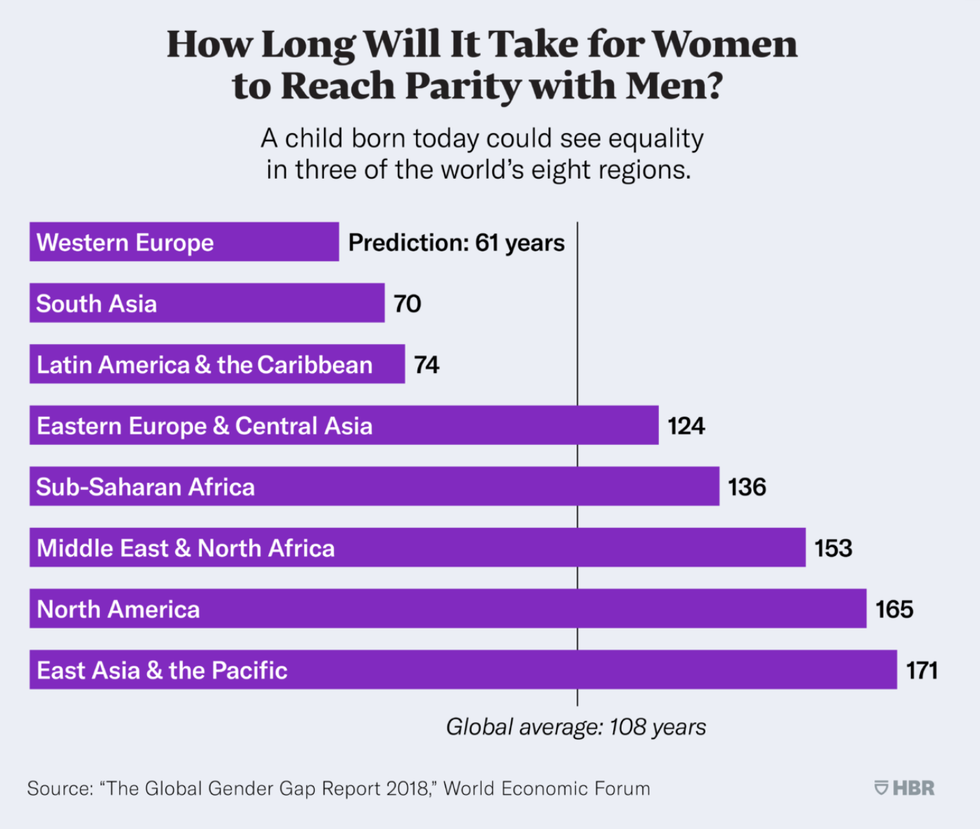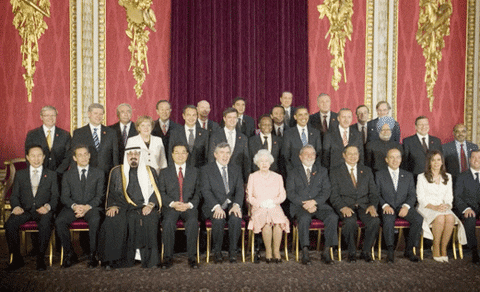If a picture's worth a thousand words, how many is a GIF?
The GIF above was inspired by a video published by Elle Magazine in 2015 showing how underrepresented women are in positions of power. In fairness, that photo of Queen Elizabeth II was actually taken a decade ago at the G20 London summit in 2009. Let's look at 2019's G20 delegation instead:

Oh... Never mind.
It's no surprise then that the World Economic Forum's Global Gender Gap Report reveals that women lag the furthest behind when it comes to measures of political empowerment and economic participation and opportunity.
The report analyzes data from 149 countries across four dimensions of gender equality:
- Economic participation and opportunity: labor-force rates, earned-income ratios for women and men, and gender ratios in legislative, managerial, and professional work
- Educational attainment: women's and men's access to primary, secondary, and tertiary education
- Health and survival: sex ratio at birth (to account for countries where male children are strongly preferred) and the difference in men's and women's life expectancies
- Political empowerment: gender ratios in ministerial and parliamentary positions, and the ratio of years that women and men have served as presidents or prime ministers in the last half century
To help make sense of the data, the Harvard Business Review recently published The Gender Gap in 6 Charts. The charts highlight areas where we're making progress on gender equality and where there's more work still to do, as well as how progress varies by region. Two of the charts (shown below) have pretty interesting implications for those of us living in the U.S....
The good news?
Globally, the gap is slightly closer now to being closed than it was in 2006.
The bad news?
Progress towards gender parity in North America has actually slowed down, and the U.S. isn't expected to reach gender parity for another 208 years! This is particularly bad news for those of us whose "American Dream" included raising children in a country with true gender equality.
While North America ranks second in terms of the percentage of the gender gap that is currently closed...

...It's expected to take over 150 years for North America to reach full gender parity.

The Conclusion?
If you want to raise your children in a country where they'll see gender parity within their lifetime (or if you want to see it yourself!), there are 15 countries currently on track to reach gender parity within the next 50 years, including France (22 years) and Iceland (23 years). Another 35 countries are expected to reach parity within a hundred years.
That said, the Report also predicts that Saudi Arabia—in spite of currently being ranked 141st in the Report—will reach parity in 76 years. (Compared to 208 years for the U.S.)
So don't consider these predictions an exact science — they're based on rates of change, and countries that are further behind, like Saudi Arabia, are able to make more drastic improvements than countries like the United States.
-----
What do you think: Time to head to France? Or does the U.S. show more promise than the World Economic Forum predicts? Tell us in the comments. And be sure to check out the full report and the rest of the HBR charts here.




